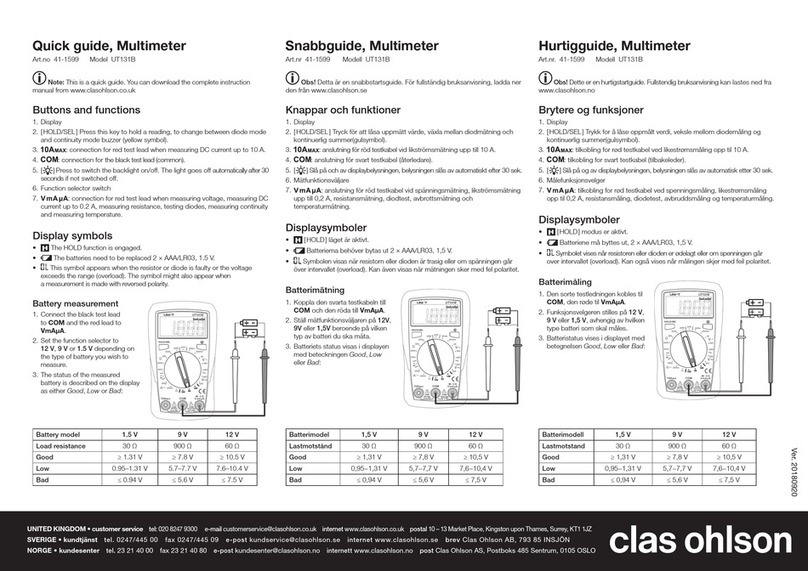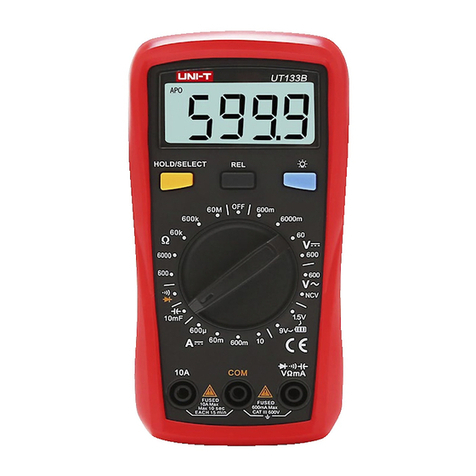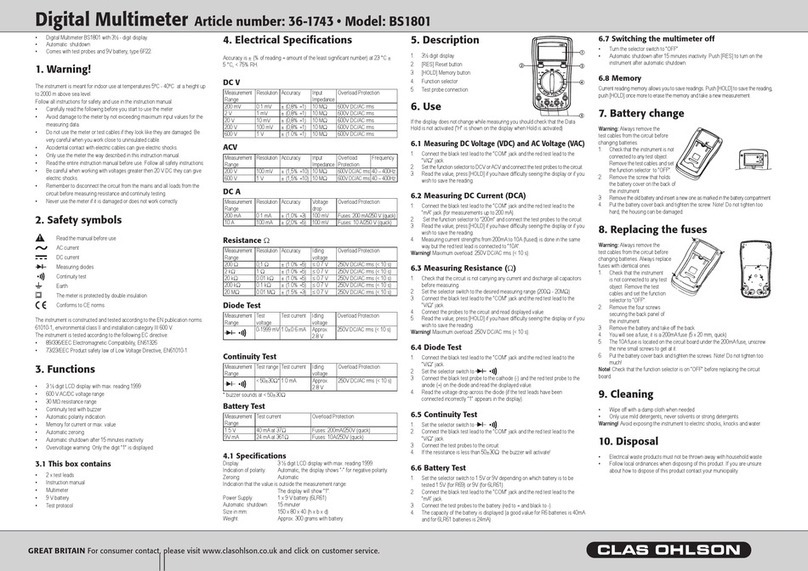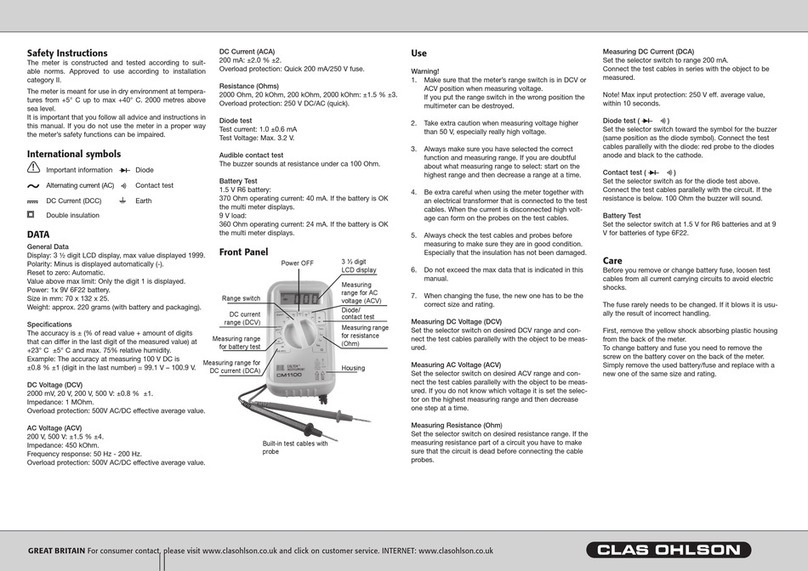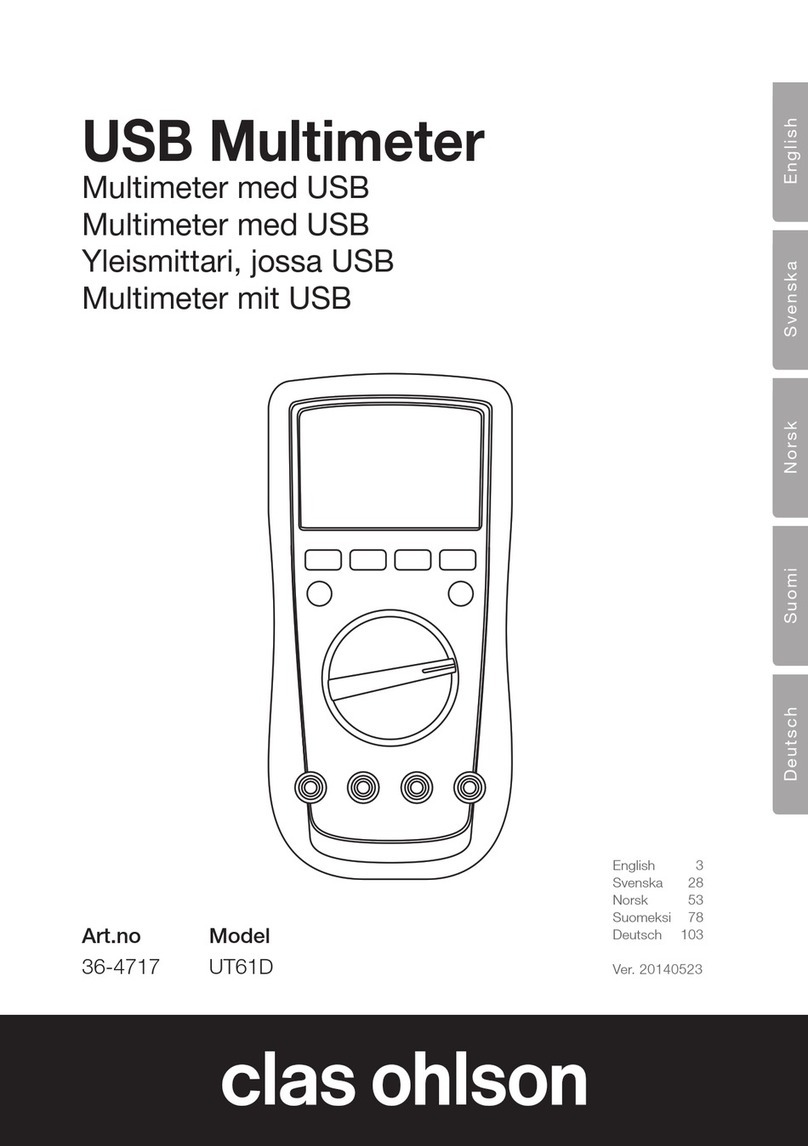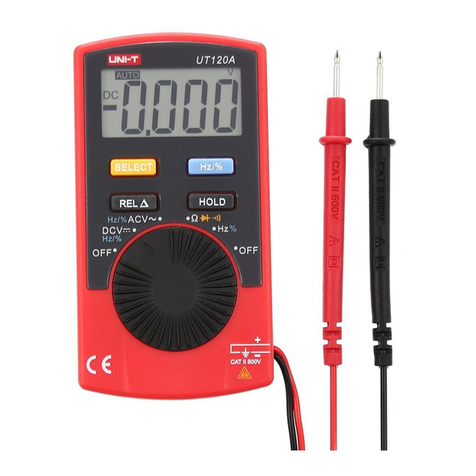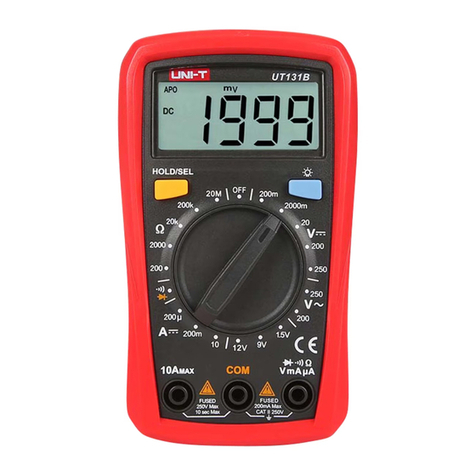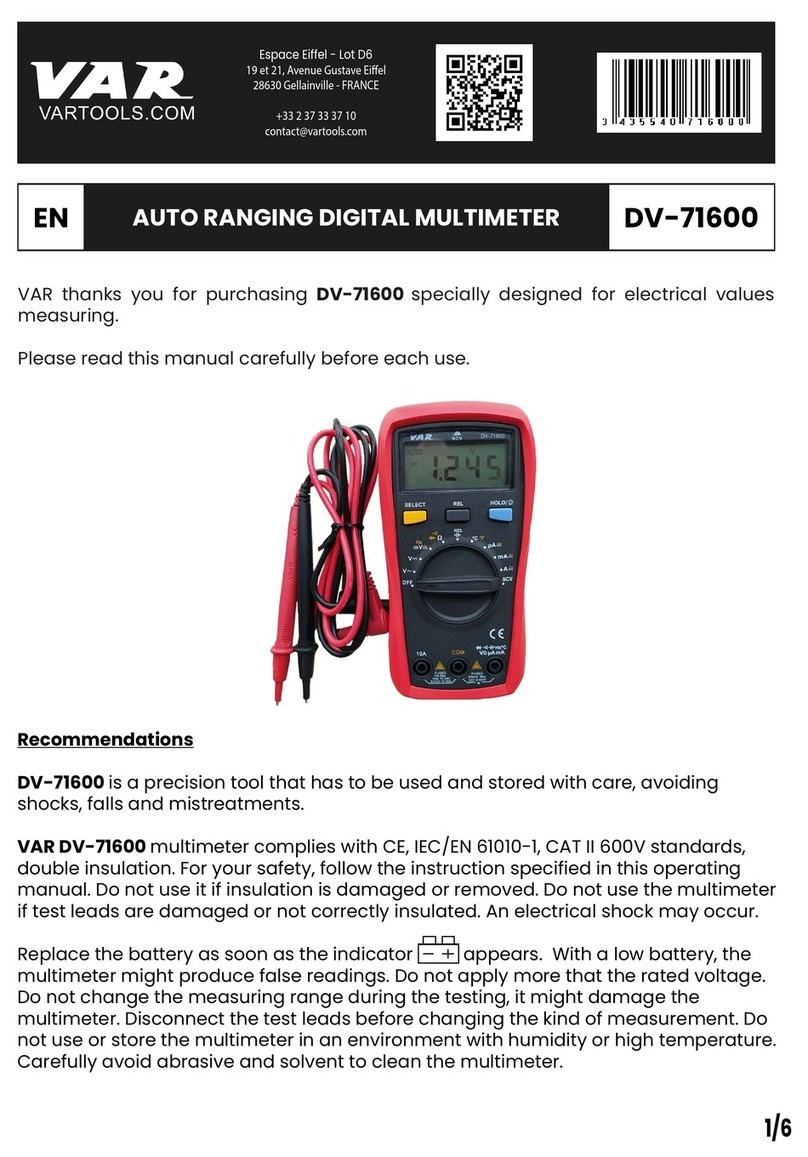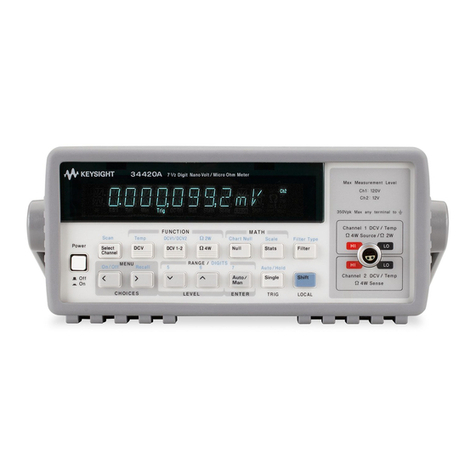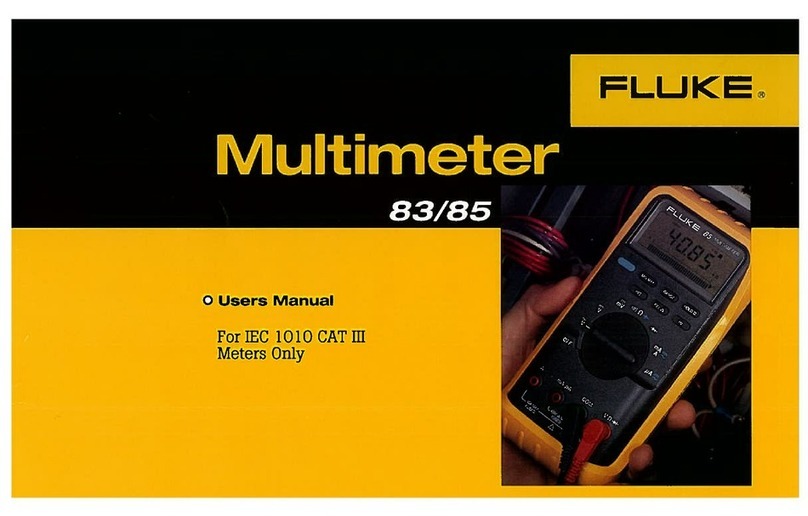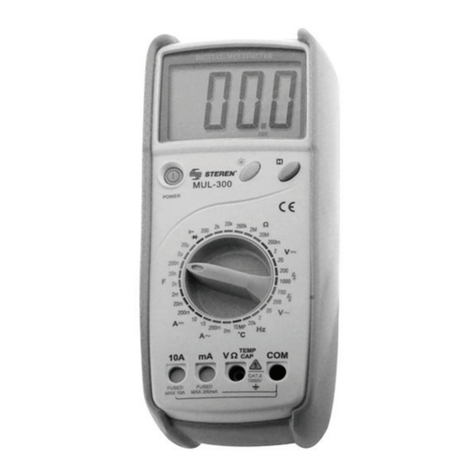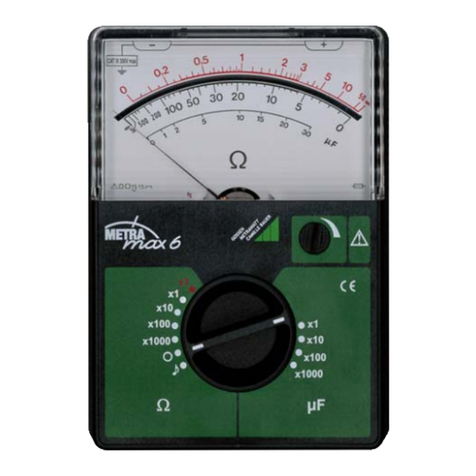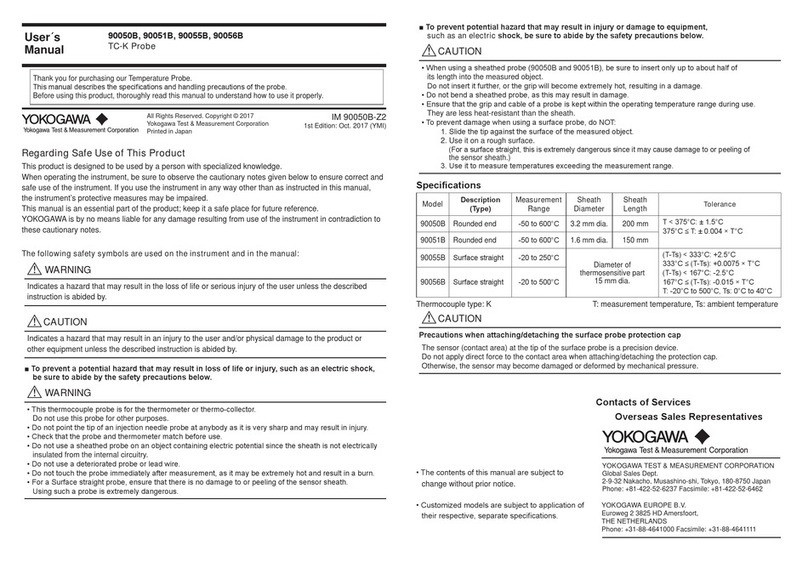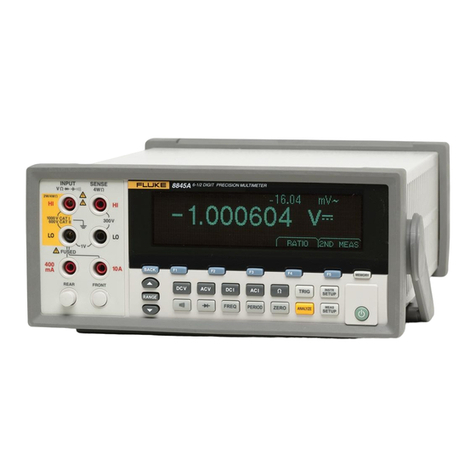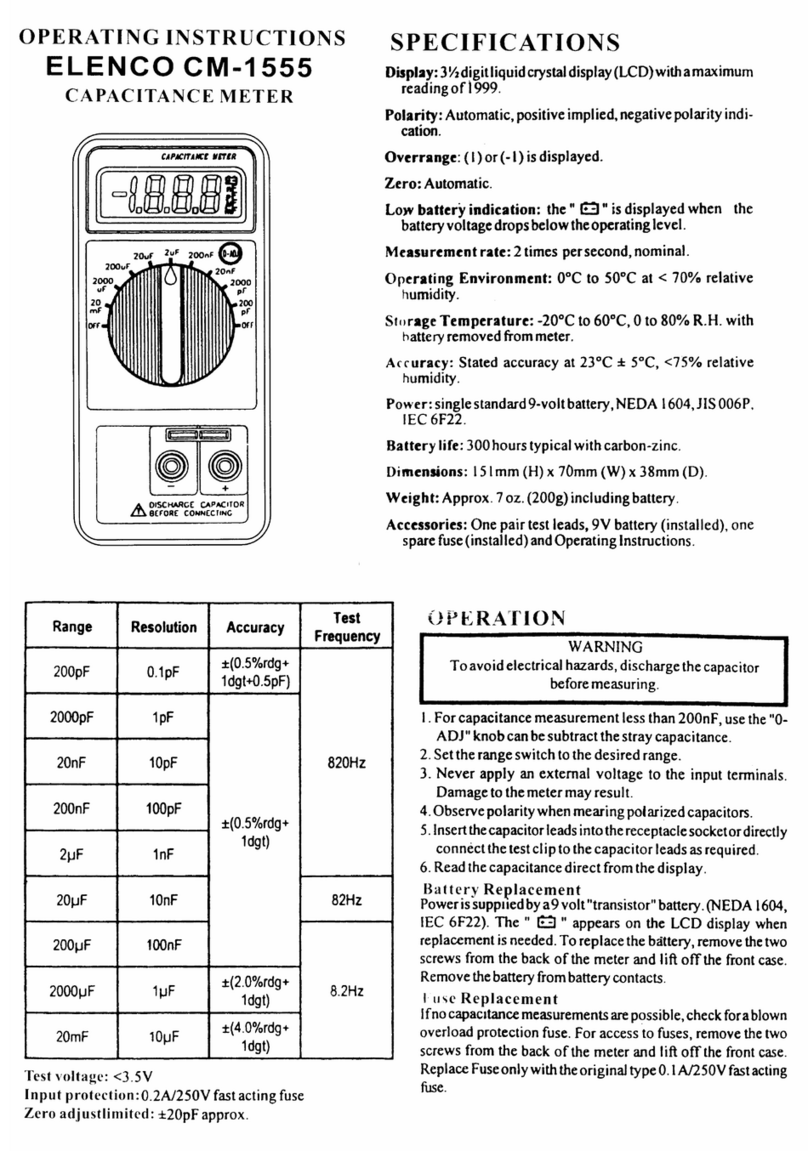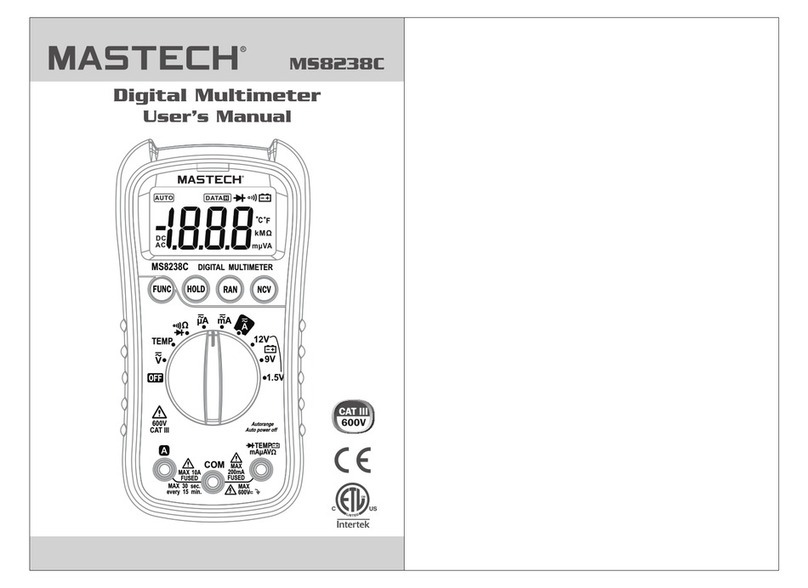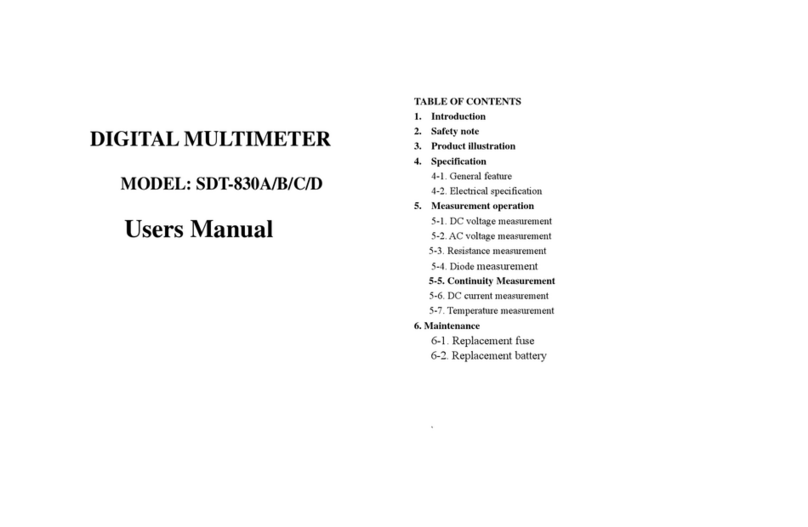
4
English
Contamination level
The meter is designed for use in environments in which contaminants which do
not conduct electricity are present. Withtheexception that temporary conductor
contamination can occur due to condensation.
Examples of environments with contamination level 2 are home environments in dry
rooms, offices, test stations and laboratories. Inother words, rooms which have
anormal indoor climate.
The meter must not be used or stored in rooms where it could be exposed to
electrically conductive contaminants in any form (solid, liquid or gas).
The meter should for example not be exposed to relative humidities in excess of 75%
or used in unheated rooms and must not be used in wetrooms or outdoors where it
could getwet.
It is not intended for use with electrical equipment which is used in industry or agriculture.
Safetyinstructions
• The multimeter has been tested in accordance with theEMC Directive 2004/108/EC
and theLow Voltage Directive 2006/95/EG, and fulfils installation category
(overvoltage category) II 250 V, contamination level 2 in accordance with
EN61010–1:2010 and EN61010-031:2002/A1:2008.
• The meter is designed for indoor use at operating temperatures in therange 0–40˚C.
• Make sure that themeter is used safely by following all safety instructions and
operating directions.
• Do not use this meter if it or thetest leads appear to be damaged, or if you
suspect that themeter might not be working properly.
• Make sure that your fingers are behind thefinger guards when using thetestleads.
• Make sure that thepower is turned off before working on power circuits. Evenlow
voltages can be dangerous!
• Do not measure voltages higher than 250 V DC or 250 V AC RMS using themeter.
• To avoid shocks you need to be CAREFUL when you work with voltage higher
then 60 V DC or 30 V AC RMS. Voltages higher than this pose arisk of heavy
electric shocks.
• Set theright measuring range using theselector before starting to measure and do
not change therange whilst taking ameasurement.
• Never use themeter if thebattery cover is missing or thebattery compartment
isopen.
• To avoid electric shocks and damage to themeter, do not exceed themeter’s
measurement limits. Theguarantee is void if themultimeter is used incorrectly.
• This multimeter is protected by fuses, but they will not protect theinstrument from
all kinds of misuse.
• The meter must not be used or stored in hot/humid, explosive or flammable
environments or close to strong magnetic fields.
